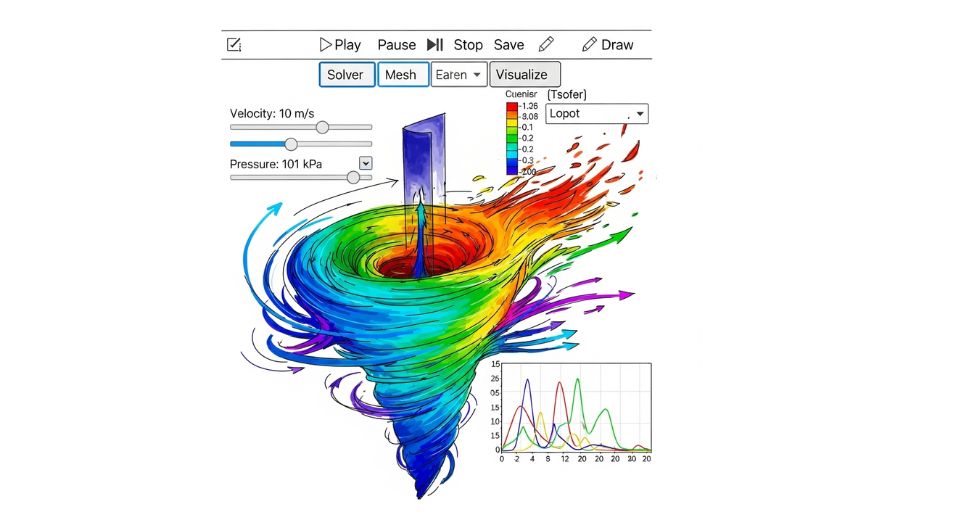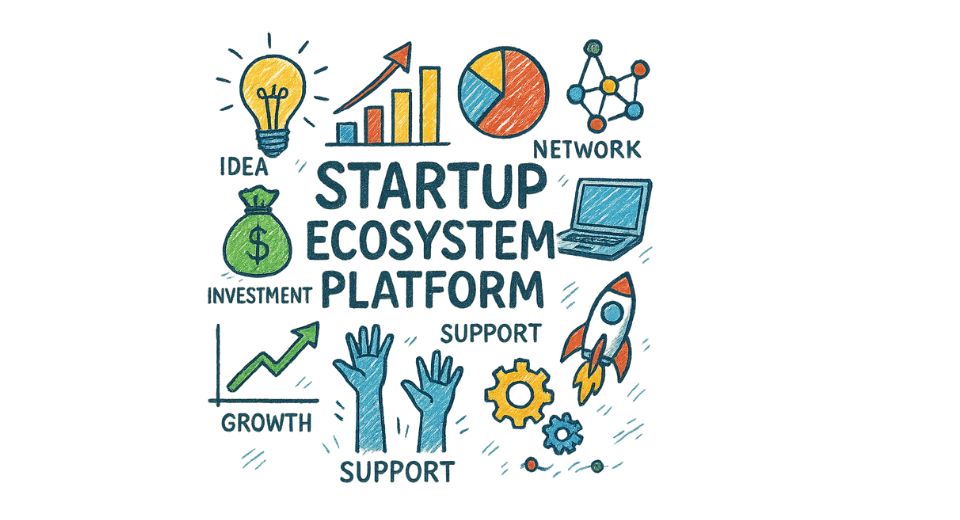MARKET OVERVIEW
The global drone market refers to unmanned aerial vehicle construction, manufacturing, and uses; it is a large and emerging sector of both technology and aerospace businesses. This diversified market is fueled by technology development with various applications in defense, logistics, agriculture, and the entertainment sector, representing marriage between innovative engineering and pragmatic solution to an ever-increasing demand for efficiency, automation, and precision of operations.
Drones, or UAVs, are aircraft without a human pilot in them. They may be remotely controlled or they can be flown autonomously through onboard computers. The global drone market is concerned with these technologies and their applications in a variety of industries. This industry's impact goes beyond conventional borders because drones are employed in aerial photography, ecological monitoring, disaster response, and even medical supply drop. Each application is adding to the overall development and diversification of this market. There is one feature of the global drone market by which it can serve for both commercial and governmental needs. On the one hand, companies are employing more and more drones in logistics, inventory management, and data gathering.
On the other hand, defense organizations were employing drones for surveillance, reconnaissance, and their tactical functions. This duality makes the market more complicated but simultaneously accentuates its wide popularity and versatility. This industry will not cease growing here because the regulatory framework will always remain in harmony with the velocity of innovation. The technological dimension, however, is not the place where the economic relevance of the global drone market is. It provides a sequence of producers, software developers, service providers, and end-consumers. This combined system highlights the emphasis on cooperation and innovation in the industry. The start-ups and the traditional players are making investments in research and development to enrich the capabilities of drones, increase safety features, and minimize costs.
This will make sure the market is competitive and cutting-edge. The global drone market will play a significant role in creating the future of various industries. It will impact the delivery of goods, the way land is tilled, and the manner in which security is provided. City planning can include drone technology to map and monitor infrastructure projects effectively. Likewise, healthcare infrastructure can use drones as a part of emergency response planning, transporting critical medical aid to remote or disaster areas. These possible uses highlight the revolutionary potential of drones in solving real-world problems.
In addition, the global aspect of the market highlights the extent to which regional variation applies to adoption, regulation, and innovation. Nations that have a more developed technological foundation might concentrate on smart city development-related applications, and developing regions are likely to aim for agriculture or disaster relief applications. In that sense, the various strategies on which the global drone market will advance in the coming few years highlight the variations. The Global Drone industry is a cutting-edge, economically significant sector with immense implications for the future. With innovation being the point of focus for leading advancements, market trends will shape the efficiency of operations and forge new opportunities in industries, keeping drones in the central hub of technological and industrial advancements for years to come.
Global drone market is estimated to reach $101,084.59 Million by 2032; growing at a CAGR of 14.3% from 2025 to 2032.

GROWTH FACTORS
The global drone market has the potential to be an ever-greater industry in its own right; their uses spread across the range of industries. From not having initially been a military usage product, drones have expanded into other areas like agricultural use, logistics, and aerial surveying to provide unparalleled efficiency and innovation. This reflects growing demand for drones for commercial purposes. It entails monitoring crop specifics, the last mile of city delivery, and some form of industrial reorganization. Their efficiency and affordability have raised their application globally, yet at the same time have begun to drive a surge in investment in drones to fund that greater interest across the globe. AI and 5G connectivity have also expanded what was previously the capability of only a handful of high-end drones, for better navigation, real-time information and autonomous functionality.
All these developments render operations more efficient, enabling drones to be more useful and versatile in a variety of applications. For example, the drone powered by AI can sort through great volumes of data for precision agriculture, while 5G confirms that metropolitan city tasks with lots of complexity are done flawlessly. These innovations place the drone sector at the forefront of innovation in many fields. It is not a smooth sailing, though.
Regulatory barriers and stringent government policy are some of the principal hurdling factors. Nations place varying degrees of constraints to address privacy issues, security risks, and airspace management that hinder the adoption of drone solutions. High upfront costs and limitations of existing battery technology also act as major hurdling factors.
Investment in costly drones is considerable, but actuality is further restricted by a limited working period owing to the battery life. That is, this provides equilibrium to the otherwise optimistic perspective regarding the industry. Yet, much lies ahead to be anticipated in the years to come. Drone delivery companies are growing ever more steadily due to the growth in e-commerce and last-mile logistics innovation. Firms are exploring the ways drones can close the gap between warehouses and customers with ease, saving on cost and time in delivery. These advancements and further applications globally show that drones will be an integral part of daily operations in most industries sooner rather than later. The global drone market is a living and breathing entity that has vast potential. While issues prevail today, ongoing need for new ideas and promise of newly found applications will certainly guarantee expansion of the industry in the years to come.
MARKET SEGMENTATION
By Type
In the last few years, the global drone market has experienced some spectacular developments. They are gaining traction rapidly in the light of evolving technology and widely growing needs in different businesses. UAVs, also known as drones, are widely used today not only in defense but even for agriculture, construction activities, delivery services, and even film-making activities. With advancements in technology, the market for drones is going to grow tremendously and provide further scope to revolutionize different industries. According to type, three are distinctly different: fixed-wing drones, rotary-wing drones, and hybrid drones. They are of the fixed wing type, are airplane-like in design, and are mostly appropriate for long-range traveling and are used in extensive area mapping and survey.
Its application has been identified to be optimally applicable for agricultural monitoring and environmental science in scanning huge expanses with minimal energy use. Rotary-wing unmanned aerial vehicles are commonly referred to as the multi-rotor system or the single-rotor system which is more utilized due to the ability of the former to hover above and move within small space. Thus, they can be described as truly crucial in filming, in inspection activities, and in search-and-rescue operations. Hybrid drones are a mix of the two and blend extended flight duration with vertical take-off and landing. This gives hybrid drones great potential for use in delivery services and sophisticated applications, where flexibility and efficiency are paramount.
In fact, the scope for innovation seems endless and unlimited with drones moving forward. Governments, together with private companies, invest extensively in research and development to wager on improved drone technologies. Some of the most prominent among these include extending battery life and inclusion of innovative navigation systems along with elements of artificial intelligence.
These will include some of the others that will create more consistent, more effective devices that are capable of solving complicated undertakings of a task set, like in autonomously conducted deliveries and accurate agriculture. Moving forward in the future, market dynamics shall be significantly impacted by policies and regulation as well as growing safety considerations. Drones being more technologically advanced will require some form of balance towards public safety. Absolutely, companies that are moving in the direction of sustainability-for example, producing drones as green products and reducing noise-can move ahead in their abilities.
The drone industry is bound to grow worldwide with applications, with colossal change through evolving technologies in a broad category of drones and hybrid and new designs fixed or rotary wing, bound to rule our life-altering countless industries.
By Payload Capacity
The global drone market is one of those industries that holds enormous growth potential for a broad array of industries. As the technology continues to improve, drones are not restricted to specialized uses but have found use in industry sectors like agriculture, logistics, construction, and defense.
Another segmenting the market by payload capacity allows for relatively simple reading of various types of drones fulfilling distinct requirements and uses. This renders payload divisions-light, medium, and heavy-industry-specific, thereby providing the foundation for more inventions and broader application. These light payload drones have, in most cases, been utilized in situations demanding as light a drone as possible; the primary uses are aerial photography, environmental monitoring, and low-scale delivery. This price and size position such drones in a very vulnerable position to drop into the user market-which usually is composed of small business ventures or a user to keep them as their own-End.
With innovations, there will be improved battery and navigation technologies, and thus more applications for such drones with a growing feeling of demand in applications that need precision and effectiveness. Medium payload drones are in between, providing a mix of payload and mobility. They are typically applied in sectors such as infrastructure inspection, mining, and large-scale delivery services.
They can transport loads up to the weight of medium payloads, meaning that they can carry out tasks that might require more complex operations from light-weight drones. Examples of this are the transport of tools and materials during construction in hard-to-reach places and time savings with the labor cost. The use of medium-payload drones suggests an upward progression toward automation, which is possibly one aspect by which industrial practice will develop in the future.
Heavy payload drones are specifically constructed for operations that demand great lifting power. In such industries, for example, the defense industry where they can be employed in the transportation of equipment and supplies to inaccessible areas, and in the logistics where their payload promises to transform the delivery of bulk commodities, heavy payload drones are seeing an increasing market among both humanitarians and militaries, an effective means of transporting goods or relief to inaccessible or disaster zones. These drones will redefine a whole new approach to addressing issues concerning large-scale transportation as the innovations in material and propulsion advance.
By Application
The global drone market is high-growth now and will be at the leading edge of transformation for the majority of industries in the coming years. Drones, as technology advances, are embedded in an amazingly broad range of applications and provide distinctive answers to the most difficult problems. Unmanned aerial systems are no longer solely employed on specialized applications but rather become very much a part of numerous sectors. Among the key uses are surveillance where drones are increasingly utilized to monitor and offer protection. They are highly effective in military missions, border patrol, and even city security due to their ability to easily cover large distances and offer real-time information.
The drones with high-resolution cameras and sophisticated sensors can monitor movement, detect threats, and pass along the vital information in real-time. These abilities are highly beneficial in regions where natural threats and risk pose as a barrier or danger to human access. Technological advancements provide the assurance that drones become more accurate and dependable means of surveillance. The second field is surveying and mapping.
With LiDAR and GPS function, drones can prepare maps with greater precision and also obtain geographically accurate information. Drones are also being used more and more for use in construction, agricultural monitoring, and environmental surveys. For instance, farmers can have drones survey fields, monitor crop health, and optimize irrigation methods.
Construction firms utilize drones to conduct site inspections, project planning, and monitoring of work progress. With advancing technology, drones will be used more to gather and analyze data, making these operations faster and cheaper. Delivery services is also a promising use of drones.
More and more, businesses are turning to drones for logistics: they have the potential to change the face of logistics. Because they are able to ferry the packages around traffic, to the customers' doorsteps, and accomplish all of this cheaper and faster than regular delivery systems, drones have the potential to shorten delivery times as well as costs incurred by operations. The dream of drones soaring over the horizon to deliver products straight to people's doorsteps may not be that far off. And regulatory systems and technology just keep evolving. In the future, likely the international drone market will witness more adoption in such uses and beyond. But with ongoing innovation, it will not just unleash efficiency but bring an entire new possibility for the sector globally.
These systems will have far-reaching effects as they are becoming increasingly affordable and accessible. Their influence will permeate all sectors, altering the manner in which we tackle challenges and opportunities. The international drone market is a reflection of the ability of technology to facilitate change and build a smarter and more interconnected future.
By End-Users
The global drone market is rapidly emerging and expanding due to advances in technology and a growing application of drones in numerous industries. Drones, or unmanned aerial vehicles, have progressed beyond their previous military uses to be applied extensively by commercial and private industries. The evolution of this market is fueled by the need to address current problems in new means, as businesses will seek to enhance efficiency, safety, and productivity. Growing use of drones in various industries will usher the world into an era where this machine will form an essential part of daily processes everywhere.
Agriculture is perhaps the most significant field of use of drones. Farmers and agricultural business companies are using drones now to track crops, to manage pests, and irrigate. Drones allow them to collect real-time information in an economical manner that will optimize yields and eliminate wastes. Precision and efficiency delivered by drones revolutionize conventional methods of farming, opening avenues to sustainable and high-yield farming.
Recently, drones have proved to be valuable in surveys and monitoring of construction sites. Aerial devices provide proper control over projects, pointing out risks that may occur with safety standards, which helps in the execution of the project. What they offer is not just that they are time-saving but in respect of the outcomes thus provided as they save some risky conditions of manual labor. Data gathering speed and accuracy have made drones an essential tool in today’s modern construction practices. The energy sector too has seen the use of drones, particularly in maintaining infrastructures like power cables, windmills, and solar panels. This is done nowadays through the use of drones to save time and human resources. Companies are thus able to identify faults early and reduce downtime to ensure business continuity. Drones too have seen a growing application in exploration efforts to discover new sources of energy with less environmental disruption.
Media and entertainment sectors have used drones to shoot distinctive angles to offer immersive experiences. From shooting high-quality aerials to live streaming events, drones are unmatched in terms of versatility in the industry. The increasing demand for creative visual content continues to drive the rise in the application of drones in this industry.
They employ drones for observation, search and rescue, and crowd monitoring by the police. These devices enhance public safety through convenient access to real-time information, thereby facilitating timely responses to emergency situations. The trend in both of these industries continues to move in the direction of innovation since the world market for drones is likely to follow its growth pattern and set a trend towards a future full of drones in every industry.
|
Forecast Period |
2025-2032 |
|
Market Size in 2025 |
$40,244.92 million |
|
Market Size by 2032 |
$101,084.59 Million |
|
Growth Rate from 2025 to 2032 |
14.3% |
|
Base Year |
2024 |
|
Regions Covered |
North America, Europe, Asia-Pacific Green, South America, Middle East & Africa |
REGIONAL ANALYSIS
The global drone market has expanded significantly and holds tremendous scope for further growth in various geographic regions. The expansion of the market has been fueled by technological developments, rising adoption from diverse industries, and a change in consumer and commercial use. Regionally, the market is widely segmented into North America, Europe, Asia-Pacific, South America, and the Middle East & Africa. Every region is a novel opportunity and poses challenges, providing a concept of how the industry can potentially look like in the future.
North America is among the leading players in the global drone market due to strong technological foundations and high R and D investment. The United States is the leader, more than any other nation, with massive deployments in agriculture, defense, logistics, and entertainment sectors. Canada and Mexico are also adding to regional development by growing governmental efforts towards integrating drones into public and private sectors. The region has focused on innovation and harmonized regulation, which is good for continued expansion of drone use. In Europe, it's much the same: from delivery systems in the UK, inspection infrastructure in Germany and environmental monitoring in France and Italy, to mention but a few, they have all become staunch defenders of drone technology.
Such action by the European Union towards establishing a framework of drone operation illustrates that overall, it is striving to develop innovative methods without compromising safety and privacy. The opportunities will redefine the way this can reshape the operational efficiency on the whole continent.
The Asia-Pacific region is among the fastest-growing regions of the global drone market, with nations like China, India, Japan, and South Korea leading the pack. China is now a world supplier of drones because of its leadership in production, and the emphasis in India on agricultural drones and infrastructure construction highlights the revolutionary effect of the technology. Applications in disaster management and city planning are being developed by Japan and South Korea.
The heterogeneity of economic requirements and technological innovation in this region provides a productive soil for drone innovations. The situation in South America is also sunny, particularly in Brazil and Argentina where it is transforming the method of agricultural practice. This ability in solving infrastructure and logistic challenges has been under growing attention, thereby prompting more investment. Contrarily, the Middle East & Africa demonstrate growing adoption in regions, particularly within the Gulf Cooperation Council (GCC) countries.
The fields where they are making the push include smart cities and the oil pipelines which suggest an important future role for drones. Overall, the international drone industry is a fast-moving sector which has huge prospects in all areas, indicative of its capacity to redefine industries and enhance efficiency in the coming years.

COMPETITIVE PLAYERS
The global drone market is expanding considerably with enormous advancements and more competition in major players. Technology being in motion, it has revolutionized the factor that drones are not limited to only recreational use but are becoming a valuable asset for agriculture, defense, logistic, and disaster management sectors. This market is characterized by a number of leading firms that are innovating in order to strengthen their footing, and the competitive landscape of this market is showing glimpses of what it will look like in the future of this transformative industry. SZ DJI Technology Co., Ltd., generally acknowledged as a world leader in drone technology, has set the bar high when it comes to innovation, quality, and market share.
DJI, with its emphasis on dependable leading-edge drones for consumer and professional use, is top of the list. Parrot SA, when it comes to flexibility and versatility, has contributed monumental efforts in the agricultural and public safety industries. United States-based Skydio, Inc. has gained a lot of attention with its sophisticated autonomous flight abilities that revolutionized drone navigation and operational performance. One of the increasing fields of the global drone market t is agriculture, and XAG Co., Ltd. is among the businesses engaged in precision farming drones. Their tools have played a key role in boosting crop production and minimizing wastage of resources. JOUAV (Chengdu JOUAV Automation Tech Co., Ltd.) specializes in fixed-wing drones, which are extremely handy for mapping and surveying.
On the defense and surveillance front, players such as AeroVironment, Inc. and Insitu Inc. (a Boeing Company) excel with strong solutions that can handle the stringent nature of military operations.
Companies such as Anduril Industries, Inc. and Aeronautics Group (Rafael Company) are also causing ripples through the incorporation of advanced analytics and artificial intelligence into their drones. These advances are defining the future of tactical operations and border surveillance. Schiebel Corporation and Yuneec International Co., Ltd. are additionally pushing the market through attention to hybrid models and energy conservation.
Moreover, Autel Robotics Co., Ltd. and Hubsan Technology Co., Ltd. are also helping in consumer-friendly designs, making drones more popular among a broader audience. The growth in the global drone market keeps these industry giants competing regularly to keep innovating, make it more affordable, and feature it with more capabilities. It points towards an era where drones will play even more crucial roles to address global challenges and open up opportunities in several industries.
Drone Market Key Segments:
By Type
- Fixed-Wing Drones
- Rotary-Wing Drones
- Hybrid Drones
By Payload Capacity
- Light Payload
- Medium Payload
- Heavy Payload
By Application
- Surveillance
- Mapping & Surveying
- Delivery Services
By End-Users
- Agriculture
- Construction
- Energy
- Media & Entertainment
- Law Enforcement
Key Global Drone Industry Players
- SZ DJI Technology Co., Ltd.
- Parrot SA
- Skydio, Inc.
- XAG Co., Ltd.
- JOUAV (Chengdu JOUAV Automation Tech Co., Ltd.)
- AeroVironment, Inc.
- Insitu Inc. (a Boeing Company)
- Anduril Industries, Inc.
- Aeronautics Group (a Rafael Company)
- Schiebel Corporation
- Yuneec International Co., Ltd.
- Autel Robotics Co., Ltd.
- Hubsan Technology Co., Ltd.
WHAT REPORT PROVIDES
- Full in-depth analysis of the parent Industry
- Important changes in market and its dynamics
- Segmentation details of the market
- Former, on-going, and projected market analysis in terms of volume and value
- Assessment of niche industry developments
- Market share analysis
- Key strategies of major players
- Emerging segments and regional growth potential








 US: +1 3023308252
US: +1 3023308252






